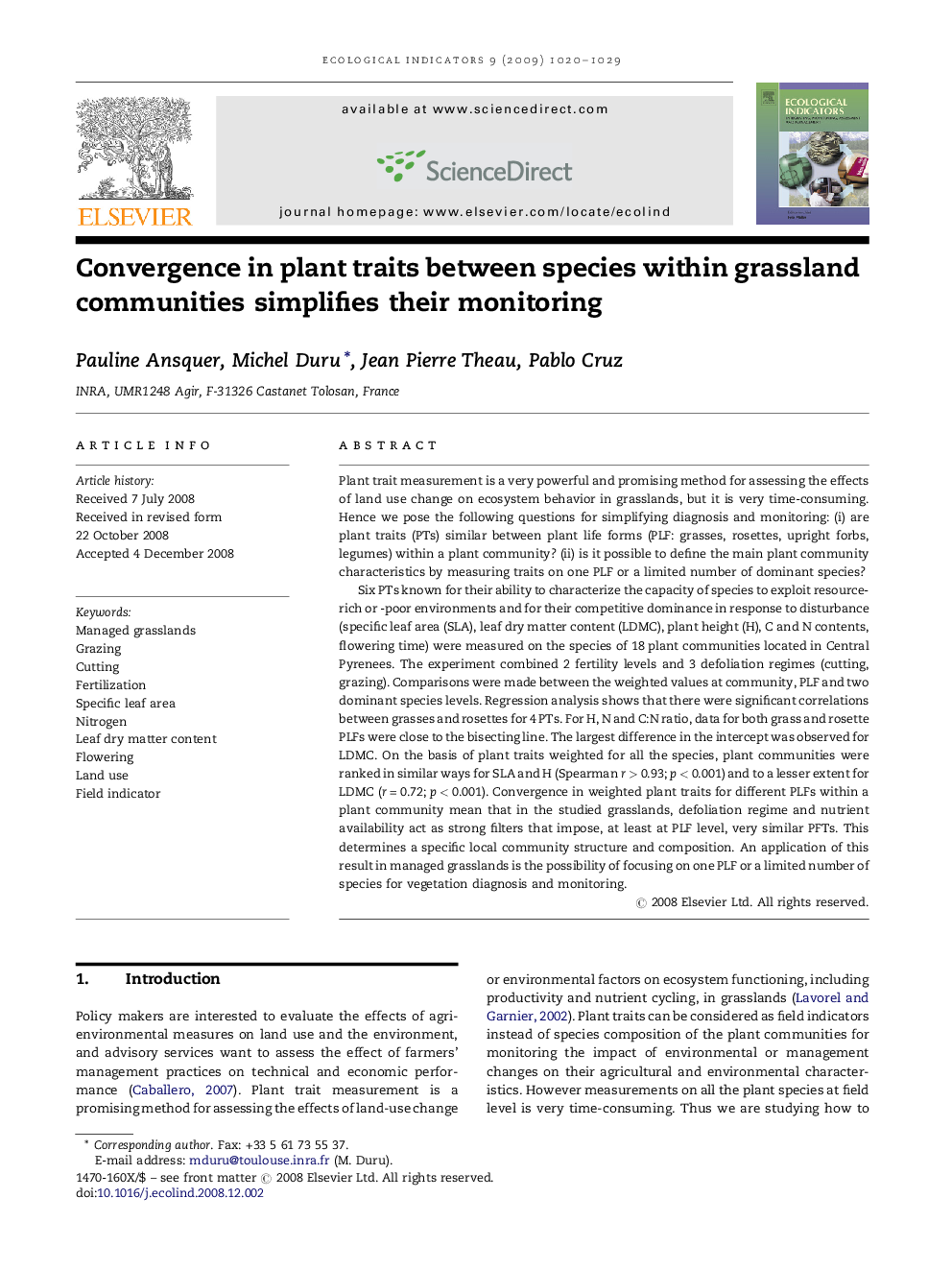| کد مقاله | کد نشریه | سال انتشار | مقاله انگلیسی | نسخه تمام متن |
|---|---|---|---|---|
| 4374526 | 1303177 | 2009 | 10 صفحه PDF | دانلود رایگان |
عنوان انگلیسی مقاله ISI
Convergence in plant traits between species within grassland communities simplifies their monitoring
دانلود مقاله + سفارش ترجمه
دانلود مقاله ISI انگلیسی
رایگان برای ایرانیان
کلمات کلیدی
موضوعات مرتبط
علوم زیستی و بیوفناوری
علوم کشاورزی و بیولوژیک
بوم شناسی، تکامل، رفتار و سامانه شناسی
پیش نمایش صفحه اول مقاله

چکیده انگلیسی
Six PTs known for their ability to characterize the capacity of species to exploit resource-rich or -poor environments and for their competitive dominance in response to disturbance (specific leaf area (SLA), leaf dry matter content (LDMC), plant height (H), C and N contents, flowering time) were measured on the species of 18 plant communities located in Central Pyrenees. The experiment combined 2 fertility levels and 3 defoliation regimes (cutting, grazing). Comparisons were made between the weighted values at community, PLF and two dominant species levels. Regression analysis shows that there were significant correlations between grasses and rosettes for 4 PTs. For H, N and C:N ratio, data for both grass and rosette PLFs were close to the bisecting line. The largest difference in the intercept was observed for LDMC. On the basis of plant traits weighted for all the species, plant communities were ranked in similar ways for SLA and H (Spearman r > 0.93; p < 0.001) and to a lesser extent for LDMC (r = 0.72; p < 0.001). Convergence in weighted plant traits for different PLFs within a plant community mean that in the studied grasslands, defoliation regime and nutrient availability act as strong filters that impose, at least at PLF level, very similar PFTs. This determines a specific local community structure and composition. An application of this result in managed grasslands is the possibility of focusing on one PLF or a limited number of species for vegetation diagnosis and monitoring.
ناشر
Database: Elsevier - ScienceDirect (ساینس دایرکت)
Journal: Ecological Indicators - Volume 9, Issue 5, September 2009, Pages 1020-1029
Journal: Ecological Indicators - Volume 9, Issue 5, September 2009, Pages 1020-1029
نویسندگان
Pauline Ansquer, Michel Duru, Jean Pierre Theau, Pablo Cruz,